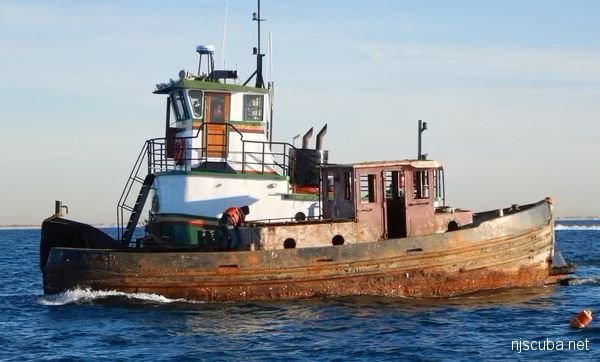Chickadee ST-555

- Type:
- artificial reef, tugboat, USA
- Built:
- 1944, Port Houston Iron Works, Houston TX USA as ST-555
- Specs:
- ( 45 ft ) 20 gross tons
- Sunk:
- Tuesday Dec 21, 2021 - McAllister Artificial Reef
- Depth:
- GPS:
- 40°32.093' -73°39.209'
Chickadee was built in 1944 by Port Houston Iron Works for the U.S. Army as ST-555. Sold by the Army in 1948. Prior to being reefed, Chickadee assisted with towing Long Island Lighting Company (LILCO) coal and oil barges in Port Jefferson, New York. The vessel was formerly berthed in Staten Island and owned by Admiral Towing and Salvage LLC.


Design 320 45’ "Equity" Tugboat
From 1943 into the late 1950s this 45 foot model known as Design 320 was made by various contractors for the US Army as "ST", or "Small Tugboat", and for the US Navy as the "YTL". Many feel the original design came from the Equitable Equipment Company, Inc. of New Orleans as one of their “Equity Standards”. The boats were all-steel and had divided watertight lower sections. Many were made for the civilian market as well over the years.
At 45 feet, the tug could be placed on a railcar, making its transportation much easier. The wheelhouse also is bolted-on instead of welded, so it can be removed. Very early examples were underpowered with a 150 HP engine. Later versions of the boat were usually powered with a 400 HP diesel while the last boats often have twin screw setups with a combined total of about 700HP.
Large numbers of these boats have no historic records, other than a delivery date to the US Army. The earliest Design 320 on the ST Army record was ST 171, which was delivered in June of 1943. It was made by Reliable Welding Works of Olympia, Washington.


Questions or Inquiries?
Just want to say Hello? Sign the .